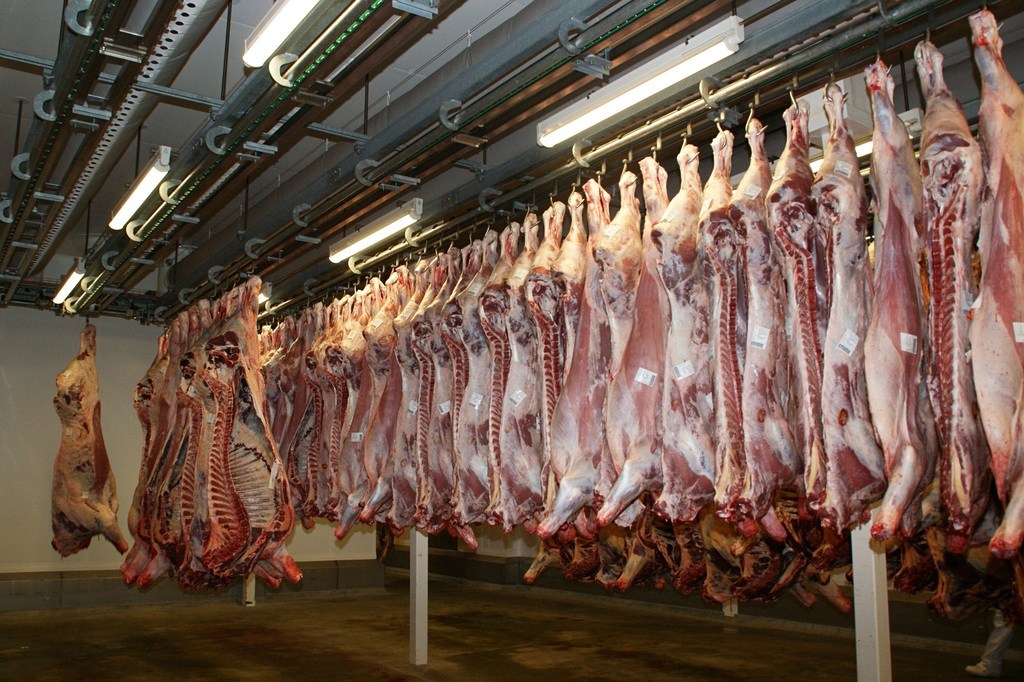New controls on slaughterhouses in Flanders will be no more than window-dressing unless legislation is amended to back up the inspectors, according to the Federation of Belgian Meat (Febev), which represents slaughterhouses, cutting plants and wholesalers.
Earlier this month Flemish minister for animal welfare Ben Weyts (N-VA) announced new inspections for slaughterhouses, whose only interest would be animal welfare. A team of 25 veterinary inspectors would make flying visits to the region’s 70 slaughterhouses, each visit for a minimum of three hours, in what Weyts called “one of the most comprehensive control systems in Europe”.
But for Febev, the new inspections will be useless unless there are changes to the national legislation which governs the powers of inspectors.
At present, and across the country, veterinary inspectors from the federal food safety agency are present at slaughterhouses from half an hour before work starts until the last animal has passed through the process. They are concerned with not only animal welfare but also with hygiene and food safety.
However if the federal inspectors notice an infringement of animal welfare rules, they have no power to act.
“In the event of animal welfare violations, these vets can only make observations,” explained Febev CEO Michael Gore.
“They record the data on information forms and these are forwarded to the Flemish animal welfare service. There it often takes weeks before the complaint is dealt with,” he said.
The animal welfare service confirmed.
“Depending on the infringement established, a warning or an official report is drawn up against the offender. This can be the slaughterhouse, the transporter or the livestock farmer,” said spokesperson Brigitte Borgmans. There is, however, no fixed term for processing the forms.
The forms are available for inspection on request, from members of the public or particularly animal rights organisations, and this, Gore said, leads to confusion.
“The forms are collected per slaughterhouse, and so it seems that our sector is to blame, while in the vast majority of cases the animal welfare violations identified can be traced back to the transporter or the farmer.”
That, he said, makes it an easy matter for organisations to target slaughterhouses in a targeted manner.
“When the information forms are requested from the Animal Welfare Service, we see some time later that undercover images are being made at the slaughterhouses concerned. And as soon as those images are released, the minister is ready with a message that is based on animal welfare,” Gore said.
Legislation needs to be amended, Febev argues, to make it possible for veterinary inspectors to act on the spot when a violation is spotted. That would obviate the need for extra Flemish inspectors, who will in any case not be present full-time, and will not have more powers than their federal counterparts.
“This is mere window dressing, because the problem remains: they too will only be able to identify the infringements and not be able to take action,” Gore said.
“Moreover, it is a waste of resources, because the findings are already being made today by the federal veterinarian on assignment.”
Weyts’ office denied the new inspectors have no powers. “For example, they can stop the slaughter line if an offence is detected, or demand that an animal be killed on the spot,” said spokesperson Michaël Devoldere.
Alan Hope
The Brussels Times

